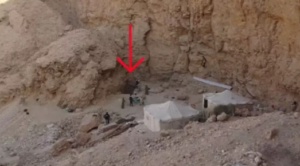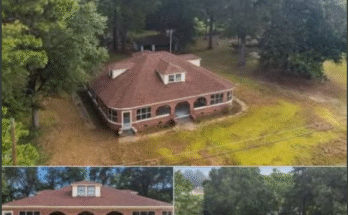In a groundbreaking archaeological achievement, the tomb of Pharaoh Thutmose II has been unearthed in Egypt’s Theban Necropolis, marking the first discovery of a pharaoh’s tomb since that of Tutankhamun in 1922. This monumental find offers profound insights into Egypt’s 18th Dynasty and reshapes our understanding of ancient royal burials.
Discovery Details
The joint Egyptian-British archaeological mission, led by Piers Litherland of the New Kingdom Research Foundation and Dr. Judith Bunbury of the University of Cambridge, located the tomb in the Western Valleys near Luxor. Initially, the team believed they had found the tomb of a royal wife due to its proximity to other queens’ tombs. However, the grand architectural features, including a wide staircase and a large doorway, suggested a more significant occupant. The presence of Amduat scenes, religious texts reserved for pharaohs, within the burial chamber confirmed the tomb’s royal status. Further evidence came from alabaster jar fragments inscribed with the names of Thutmose II and his wife, Hatshepsut. These artifacts are the first directly associated with Thutmose II’s burial.
Historical Context
Thutmose II, who reigned from approximately 1493 to 1479 BCE, was the husband and half-brother of Hatshepsut, one of ancient Egypt’s few female pharaohs. His reign, though brief, has been overshadowed by his more renowned family members. The discovery of his tomb provides a unique opportunity to study a less-documented period of the 18th Dynasty.
Tomb’s Condition and Significance
Despite its historical importance, the tomb was found in a deteriorated state due to ancient flooding. Water damage likely led to the relocation of its original contents in antiquity. However, the discovery of an intact foundation deposit suggests the existence of a second, possibly undisturbed tomb of Thutmose II nearby. This potential find could offer unprecedented insights into royal burial practices and the pharaoh’s life.
Implications for Egyptology
This discovery addresses a longstanding mystery regarding the burial locations of early 18th Dynasty pharaohs. The tomb’s location, previously thought to be near the Valley of the Kings, challenges existing theories about royal burials during this period. Sherif Fathy, Egypt’s Minister of Tourism and Antiquities, hailed the find as the most significant since Tutankhamun’s tomb, emphasizing its importance in understanding Egypt’s ancient history.
Future Research
The archaeological team plans to continue excavations in the area, aiming to locate the second tomb and further explore the life and reign of Thutmose II. These efforts promise to deepen our knowledge of the 18th Dynasty and the complexities of royal succession and burial customs in ancient Egypt.


